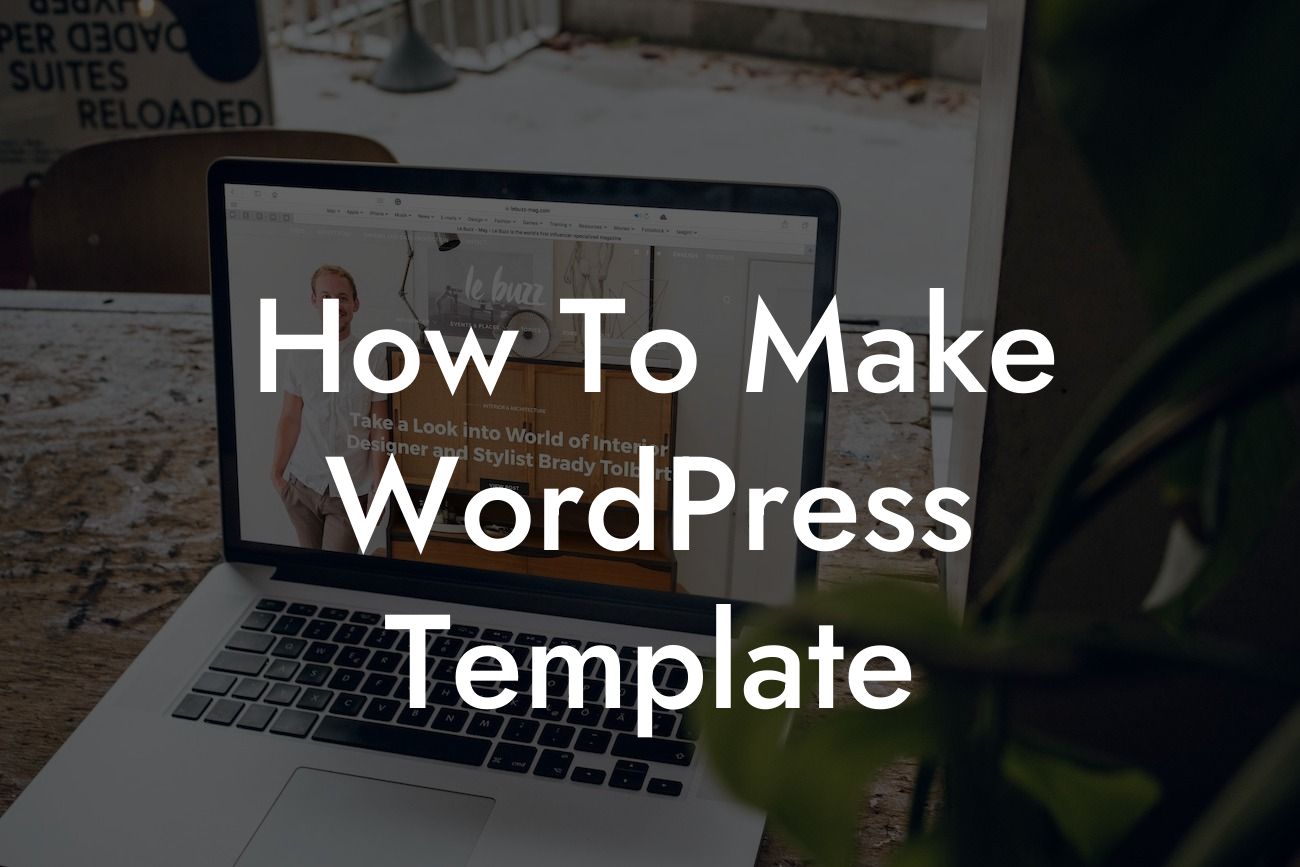Are you tired of generic website templates that do not truly reflect the uniqueness of your small business or entrepreneurial venture? Look no further! In this article, we will walk you through the process of creating a custom WordPress template. With DamnWoo's exclusive plugins designed explicitly for small businesses and entrepreneurs, you can enhance your online presence and take your success to new heights. Say goodbye to ordinary and unleash the extraordinary!
Do you want your website to stand out from the crowd and provide a seamless user experience? Creating your own WordPress template allows you to customize every aspect according to your unique needs. Let's dive into the step-by-step process of making a WordPress template that will truly represent your brand:
1. Planning and Research:
Effective planning is key to developing a successful WordPress template. Start by identifying your target audience, understanding their preferences, and exploring your competitors' websites. Research trending design elements, color schemes, and user-friendly layouts to create an engaging and professional template.
2. Wireframing and Design:
Looking For a Custom QuickBook Integration?
Before diving into coding, it's essential to outline the structure and layout of your template. Use wireframing tools or simply sketch out your design ideas on paper. Consider the placement of key elements such as headers, menus, content sections, and footers. This step will give you a clear vision of your template's overall look and feel.
3. HTML and CSS Coding:
Now it's time to bring your design to life! Begin by converting your wireframe into HTML and CSS code. WordPress templates utilize PHP, so make sure you have a basic understanding of this language. Break your design into sections and code each one accordingly, ensuring responsive and mobile-friendly design practices. Utilize suitable H2, H3 headings, bullet points, and ordered lists to create an organized and visually appealing template.
4. Adding WordPress Functionality:
Once your HTML and CSS are in place, it's time to integrate WordPress functionality. Start by creating the necessary file structure, including the index.php, style.css, and functions.php files. Learn about the WordPress template hierarchy and utilize WordPress tags and functions to dynamically display content. Customize the template further by adding custom fields, widgets, and menus.
How To Make Wordpress Template Example:
Let's consider a realistic example of creating a WordPress template for a photography business. Imagine incorporating a visually stunning homepage slider showcasing the photographer's best shots. Each photo can be linked to an individual portfolio page, optimized for SEO and ensuring maximum exposure for the business. Additionally, the template can include a dedicated contact page with a contact form to capture potential clients' information. The possibilities are endless!
Congratulations! You've successfully learned how to create a WordPress template from scratch. Now, take your online presence to the next level with DamnWoo's outstanding plugins designed exclusively for small businesses and entrepreneurs like you. Explore other informative guides on DamnWoo's blog to enhance your digital marketing skills, and don't forget to try one of our awesome plugins. Share this article with your network and let them discover the power of customized WordPress templates too!













